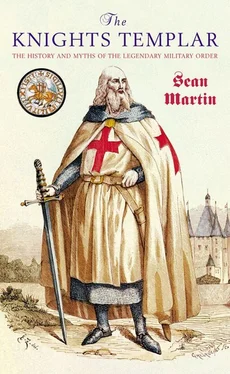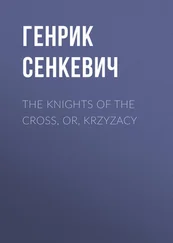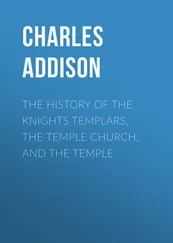Sean Martin - The Knights Templar
Здесь есть возможность читать онлайн «Sean Martin - The Knights Templar» весь текст электронной книги совершенно бесплатно (целиком полную версию без сокращений). В некоторых случаях можно слушать аудио, скачать через торрент в формате fb2 и присутствует краткое содержание. Год выпуска: 2004, ISBN: 2004, Жанр: История, на английском языке. Описание произведения, (предисловие) а так же отзывы посетителей доступны на портале библиотеки ЛибКат.
- Название:The Knights Templar
- Автор:
- Жанр:
- Год:2004
- ISBN:1-904048-28-5
- Рейтинг книги:3 / 5. Голосов: 1
-
Избранное:Добавить в избранное
- Отзывы:
-
Ваша оценка:
- 60
- 1
- 2
- 3
- 4
- 5
The Knights Templar: краткое содержание, описание и аннотация
Предлагаем к чтению аннотацию, описание, краткое содержание или предисловие (зависит от того, что написал сам автор книги «The Knights Templar»). Если вы не нашли необходимую информацию о книге — напишите в комментариях, мы постараемся отыскать её.
The Knights Templar — читать онлайн бесплатно полную книгу (весь текст) целиком
Ниже представлен текст книги, разбитый по страницам. Система сохранения места последней прочитанной страницы, позволяет с удобством читать онлайн бесплатно книгу «The Knights Templar», без необходимости каждый раз заново искать на чём Вы остановились. Поставьте закладку, и сможете в любой момент перейти на страницу, на которой закончили чтение.
Интервал:
Закладка:
If the Order did indeed have some kind of advance warning, and an unknown number of Templars escaped, where did they go to? Although the Order of the Temple ceased to exist in 1312, Templars did not, and various theories have been proposed as to their subsequent fate. Some were welcomed into the Hospital, while others joined the Teutonic Knights. Templars in Portugal actually went nowhere – King Diniz found the Order innocent of all crimes, and the Templars there simply changed their name to the Knights of Christ. Under this name, they continued for another two centuries, and were heavily involved in exploration. Prince Henry the Navigator and Vasco da Gama were both Knights of Christ, as was Christopher Columbus’s father-in-law; it is possible that the rumours that the Templars discovered America originated with the exploits of these Knights of Christ. In Spain, likewise, the Order of Montesa was created ‘primarily as a refuge for fugitive Templars’. 47 47 Baigent & Leigh, ibid. , p.88.
The fate of the Templar fleet has never been resolved. Almost the only place the ships could have found a safe haven would have been western Scotland, then under the control of Robert the Bruce. This theory is explored at length by Michael Baigent and Richard Leigh in their book The Temple and the Lodge , which proposes that a contingent of Templars landed in Argyll, helped Bruce to win the Battle of Bannockburn and then continued to reside in Scotland relatively unmolested. (All the Scottish Templars escaped arrest.) These Templars, and spin-off orders such as the Scots Guard, helped to pave the way for the emergence of Freemasonry. Eighteenth-century Freemasons were quick to capitalise on their supposed Templar ancestry.
If Scotland, at odds with both England and the Papacy, could have offered a safe haven for a group of Templars, then the emerging country of Switzerland could have provided another. One theory has been put forward 48 48 Alan Butler & Stephen Dafoe, The Warriors and the Bankers (Templar Books, 1998).
that a group of Templars became involved with the struggle for Swiss independence sometime after the first three Cantons – Uri, Schwyz and Unterwalden – signed a pact of mutual assistance in 1291. Swiss folk tales tell of white-clad knights appearing to assist the Cantons in the struggle against the Holy Roman Empire; the date is also significant, as, after 1291, the Templars were seemingly without a raison d’être for their continued existence. Whether or not these knights – assuming they were Templars – saw the emerging Swiss confederacy as a potential Ordensland of their own is impossible now to determine, but two factors lend credibility to this thesis. Firstly, the Swiss, once established, suddenly acquired, as if from nowhere, the best army in Europe. Their military prowess would remain unchallenged until the Battle of Marignano in 1515, when they were comprehensively defeated by the French. Secondly, Switzerland is famous (or infamous, depending upon one’s point of view) for its banks. The Templars were the true originators of the international banking system that is still in use today, predating the great Italian houses by more than a century. Perhaps it is this that is the Templars’ main legacy to us. As Desmond Seward notes, ‘no mediaeval institution did more for the rise of capitalism’ 49 49 Seward, op. cit. , p.222.
than the Templars.
A Fable Agreed Upon
The Templars are inseparable from their myth. Such is the strength of this myth that it sometimes appears that each writer who deals with them is seemingly writing about a different Order, from the academics who maintain that the Templars were, in reality, very ordinary men, to the more speculative camp who portray the Order as a secret society of mystical initiates. Ever since the time of Cornelius Agrippa, who wrote in his De occulta philosophia (1531) that the Templars committed ‘detestable heresy’, 50 50 Quoted in Peter Partner, The Murdered Magicians (OUP, 1981), p.92.
the reality of who the Templars actually were and what they actually did has been ever more obscured by later generations of commentators. The eighteenth-century Masonic movement, with its neo-Templar affectations (including the so-called Strict Templar Observance form of Freemasonry) has done much to muddy the waters. There were claims that the Order was still in existence in the early nineteenth century, and a highly suspicious list of post-1314 Grand Masters was produced by the Freemasons (see Appendix II).
As Michael Baigent and Richard Leigh point out, 51 51 Baigent & Leigh, op. cit. , pp.127 – 31.
the two camps tend to remain firmly apart, as, on the one hand, academic historians will only consider whether something ‘actually happened’, and which can be backed up by documentation and other forms of evidence, while the more speculative apologists for the Order thrive on the mythical side of the Templars. What Baigent and Leigh point out is that something does not have to ‘actually happen’ in order for it to become subsumed into the collective consciousness and affect later generations. For a myth that can affect history, one need look no further than the myth of Aryan supremacy, which the Nazis held to be gospel, with such catastrophic results. What continues to fascinate about the Templars is this apparent dichotomy between the reality and the myth, and it can only be possible to understand the Order as a whole if the mythical aspect is also considered alongside the facts.
Umberto Eco points out 52 52 Umberto Eco, Foucault’s Pendulum (Secker & Warburg, 1989), p.619.
that the conspiracy theorists tend to project a great deal of their own failings into their theories, no matter how wild. What he does not examine, however, is that the hands that write the more standard, orthodox history, can also be driven by similar forces: the desire for peer acceptance; the desire to maintain one’s position within academe; and, perhaps more importantly, one’s funding, all of which would be severely compromised by entertaining the more mythical version of the Templar story. This latter approach ignores anything vaguely speculative about the Order, and, in doing so, perpetuates a blinkered and restricted view of history.
As the great Tibetan saint Padmasambhava once said, ‘Things are not what they seem; nor are they otherwise.’ That the Order, even in its own time, was fanatically secretive only compounds the difficulty of arriving at anything close to a definitive account. It would be plausible to argue, therefore, that the Templars were, in the main, very ordinary men, but that certain elements of the Order were indeed ‘tainted’. Whether we will ever know by what, is, of course, another matter, and whether recent discoveries such as the Chinon Parchment force us to re-evaluate our thinking about the Templars, one thing remains certain: the mystique and fascination of the Order of Poor Knights of Christ and the Temple of Solomon will continue to exert their hold, and the aura surrounding the Order will continue, maybe deepen even further, and perhaps never be fully fathomed. The mystery will remain.
Endnotes
1
Baigent, Leigh & Lincoln, The Holy Blood and the Holy Grail (Jonathan Cape, 1982), p.51.
2
Genesis 22:12 – 18.
3
Daniel, ‘The Life and Journey of Daniel’, in Jerusalem Pilgrimage , ed. J.Wilkinson, Hakluyt Society 167 (London, 1988). Quoted in Barber, The New Knighthood (Cambridge University Press, 1994), p.3.
4
Daniel, ibid. Quoted in Barber, op. cit. , p.6.
Читать дальшеИнтервал:
Закладка:
Похожие книги на «The Knights Templar»
Представляем Вашему вниманию похожие книги на «The Knights Templar» списком для выбора. Мы отобрали схожую по названию и смыслу литературу в надежде предоставить читателям больше вариантов отыскать новые, интересные, ещё непрочитанные произведения.
Обсуждение, отзывы о книге «The Knights Templar» и просто собственные мнения читателей. Оставьте ваши комментарии, напишите, что Вы думаете о произведении, его смысле или главных героях. Укажите что конкретно понравилось, а что нет, и почему Вы так считаете.












